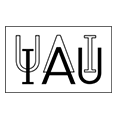First eROSITA sky-survey data release
Today, the German eROSITA consortium released the data for its share of the first all-sky survey by the soft X-ray imaging telescope flying aboard the Spectrum-RG (SRG) satellite. With about 900 000 distinct sources, the first eROSITA All-Sky Survey (eRASS1) catalogue has yielded the largest X-ray catalogue ever published. Along with the data, the consortium released a series of scientific papers describing new results ranging from studies of the habitability of planets to the discovery of the largest cosmic structures. Based on just the first six months of observations, eROSITA has already detected more sources than had previously been known in the 60-year history of X-ray astronomy. Now available to the worldwide science community, the data will revolutionise our knowledge of the Universe at high energies.
The eRASS1 observations with the eROSITA telescope were carried out from 12 December 2019 to 11 June 2020. In the most sensitive energy range of the eROSITA detectors (0.2-2 keV), the telescope detected 170 million X-ray photons, for which the cameras can accurately measure the incoming energy and arrival time. The catalogue was then constructed – after careful processing and calibration – by detecting concentrations of photons in the sky against a bright, large-scale, diffuse background. After eRASS1, eROSITA has continued scanning the sky and accumulated several additional all-sky surveys. Those data will also be released to the world in the coming years.
The eRASS1 catalogue covers half the X-ray sky, the data share of the German eROSITA consortium. It consists of more than 900 000 sources, including some 710 000 supermassive black holes in distant galaxies (active galactic nuclei), 180 000 X-ray emitting stars in our own Milky Way, 12 000 clusters of galaxies, plus a small number of other exotic classes of sources like X-ray emitting binary stars, supernova remnants, pulsars, and other objects.
“These are mind-blowing numbers for X-ray astronomy,” says Andrea Merloni, eROSITA principal investigator and first author of the eROSITA catalogue paper. “We’ve detected more sources in 6 months than the big flagship missions XMM-Newton and Chandra have done in nearly 25 years of operation.”
Co-ordinated with the release, the German eROSITA Consortium has submitted almost 50 new scientific publications to peer-reviewed journals, adding to the more than 200 which had already been published by the team before the data release.
This first eRASS data release (DR1) makes public not only the source catalogue, but images of the X-ray sky at multiple X-ray energies and even lists of the individual photons with their sky positions, energies and precise arrival times. The software needed to analyse the eROSITA data is also included in the release. For many source classes, supplementary data from other wavebands has also been incorporated into so-called “value-added” catalogues that go beyond pure X-ray information.
The German eROSITA Consortium is led by the Max Planck Institute for Extraterrestrial Physics (MPE), and includes the Dr. Karl Remeis Observatory Bamberg, the University of Hamburg Observatory, the Leibniz Institute for Astrophysics Potsdam (AIP), and the Institute for Astronomy and Astrophysics of the University of Tübingen, with the support of DLR and the Max Planck Society. The Argelander Institute for Astronomy of the University of Bonn and the Ludwig-Maximilians-Universität Munich also participate in the science exploitation of eROSITA as associated institutes.The eROSITA data are processed using the eSASS software system developed by the German eROSITA consortium.
eROSITA is the soft X-ray instrument aboard Spektrum-RG (SRG), a joint Russian-German science mission supported by the Russian Space Agency (Roskosmos), in the interests of the Russian Academy of Sciences represented by its Space Research Institute (IKI), and the German Space Agency at DLR (Deutsches Zentrum für Luft- und Raumfahrt). The SRG spacecraft was built by Lavochkin Association (NPOL) and its subcontractors, and is operated by NPOL with support from the Max-Planck Institute for Extraterrestrial Physics (MPE).
The telescope was launched into space onboard the SRG mission on July 13, 2019. Its large collecting area and wide field of view are designed to perform to a deep all-sky survey in the X-ray band. Over the course of six months (December 2019 to June 2020), SRG/eROSITA completed the first survey of the whole sky at energies 0.2-8 keV, which is significantly deeper than the only existing all-sky survey with an X-ray imaging telescope, performed by ROSAT in 1990 at energies 0.1-2.4 keV. Three more scans of the entire sky were completed between June 2020 and February 2022. eROSITA has been placed in Safe Mode in February 2022, and has not restarted science operations since.
More information:
Press release MPE: https://www.mpe.mpg.de/7989698/news20240131
eRASS1 catalogue paper:
Merloni et al.: The SRG/eROSITA all-sky survey, First X-ray catalogues and data release of the Western Galactic hemisphere
A&A volume 682, A34.
https://www.aanda.org/10.1051/0004-6361/202347165
Contacts:
Dr. Andrea Merloni
Max-Planck-Institut für extraterrestrische Physik (MPE)
Phone: +49 89 30000-3893
Email: am@mpe.mpg.de
Dr. Hannelore Hämmerle
MPE Press Officer
Phone +49 89 30000-3980
Email: pr@mpe.mpg.de
Dr. Janine Fohlmeister
Press officer of the German Astronomical Society
Phone: +49 331 7499 802
Email: pressereferentin@astronomische-gesellschaft.de




